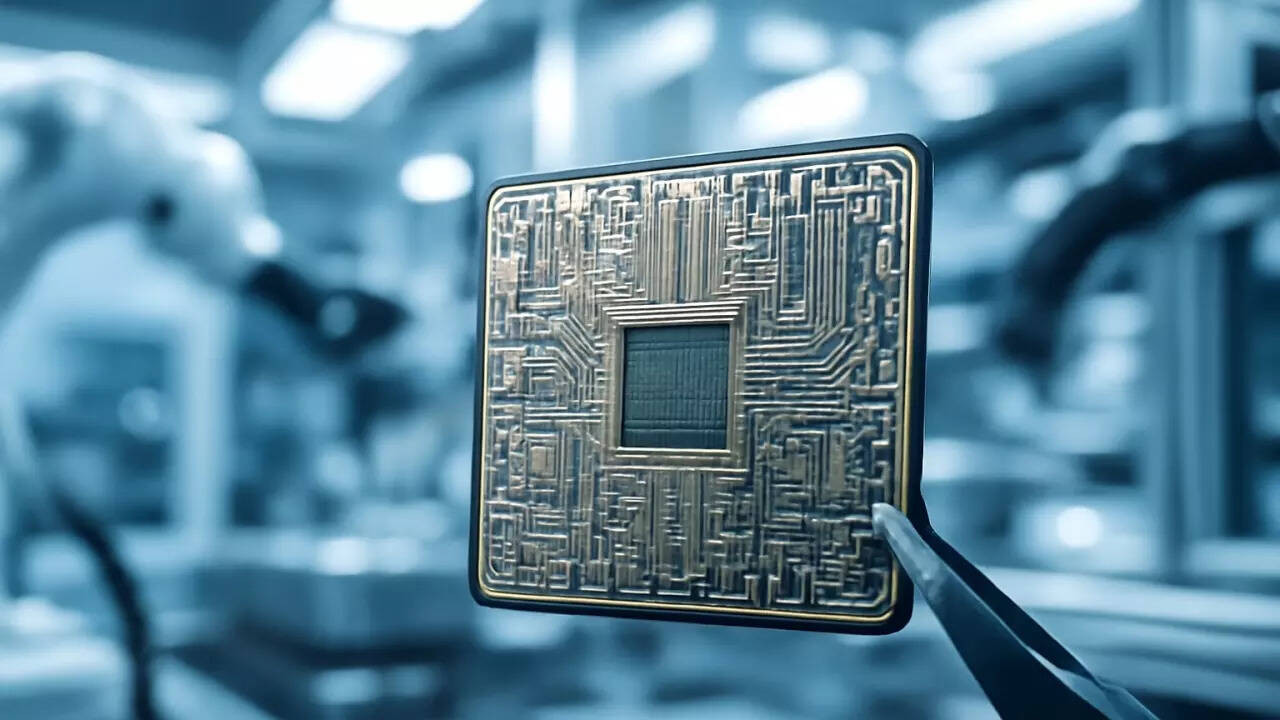India’s semiconductor ambitions receive a boost as Minister Ashwini Vaishnaw lauds progress in chip manufacturing, emphasizing the goal of becoming a “product nation.” He highlighted the Design Linked Incentives (DLI) scheme, supporting startups like IIT-M incubated Mindgrove Technologies, which designs secure IoT chips.
India’s Chip Dreams: Are We on the Verge of a Manufacturing Revolution?
Forget the snake charmers and elephant rides – India is setting its sights on a new, decidedly more high-tech image: a global manufacturing powerhouse. The buzz in government circles? Becoming a “product nation,” a shift in focus from primarily being a service-based economy to one that designs, develops, and makes things. And at the heart of this ambition lies the semiconductor industry.
The recent pronouncements from Ashwini Vaishnaw, India’s Minister for Railways, Communications, Electronics and Information Technology, have been nothing short of electrifying. He’s not just talking the talk; he’s actively championing the country’s push into chip manufacturing and design, fueling a sense of optimism and urgency within the tech sector.
So, what’s driving this ambition? It’s more than just national pride. The global semiconductor shortage, triggered by the pandemic, exposed vulnerabilities in supply chains and highlighted the strategic importance of having domestic chip production capabilities. Nations realized that reliance on a handful of players for such a critical component was a recipe for disaster. India, recognizing this, wants to ensure its own economic security and technological independence.
Boosting Chip Design: A Playground for Startups
Vaishnaw has been particularly vocal about fostering innovation at the grassroots level, encouraging startups to dive into the world of chip design. This isn’t just about attracting multinational corporations to set up shop; it’s about nurturing indigenous talent and creating a vibrant ecosystem where Indian engineers and entrepreneurs can thrive. The government is actively rolling out incentives and support programs designed specifically to help these nascent businesses navigate the complexities of the semiconductor industry. This includes access to funding, mentorship, and cutting-edge research facilities.
The vision extends beyond simply replicating existing chip designs. The goal is to encourage innovation and the development of intellectual property, positioning India as a leader in next-generation semiconductor technology. Imagine a future where Indian-designed chips power everything from smartphones to electric vehicles, competing with the best in the world. That’s the ambitious target.

More Than Just Chips: A Holistic Ecosystem
The focus on semiconductors is, of course, just one piece of a much larger puzzle. Building a “product nation” requires a holistic approach that encompasses everything from infrastructure development and workforce training to streamlining regulations and fostering a culture of innovation. The government is investing heavily in these areas, recognizing that a strong foundation is essential for long-term success.
Consider the push for improved infrastructure. Reliable power, efficient logistics, and robust digital connectivity are all crucial for attracting manufacturing investment. Similarly, equipping the workforce with the necessary skills through targeted training programs is essential to ensure that India has the talent pool needed to support a thriving manufacturing sector. You can explore more about government initiatives to boost technological advancement on our dedicated page.
Challenges and Opportunities
Of course, the road to becoming a global manufacturing hub is not without its challenges. The semiconductor industry is incredibly complex and capital-intensive. Competing with established players like Taiwan, South Korea, and the United States will require significant investment, strategic partnerships, and a relentless focus on innovation.
Furthermore, navigating the bureaucratic hurdles and regulatory complexities that have historically plagued India’s business environment will be crucial. Streamlining processes, reducing red tape, and creating a more transparent and predictable regulatory framework will be essential to attract both domestic and foreign investment.
Despite these challenges, the opportunities are immense. India’s large and growing domestic market, its abundant pool of skilled engineers, and the government’s unwavering commitment to supporting the manufacturing sector make it a compelling destination for companies looking to diversify their supply chains and tap into new markets. The potential for job creation and economic growth is staggering.
The Future is Now
The shift towards becoming a “product nation” is more than just a policy objective; it’s a fundamental transformation of India’s economic DNA. It’s a bold vision that requires sustained effort, strategic investment, and a collaborative spirit between government, industry, and academia. While the journey will undoubtedly be challenging, the potential rewards are too significant to ignore. India’s semiconductor ambitions are taking shape, brick by brick, and might reshape the world economy.







